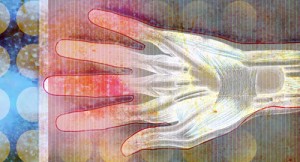 Editor’s note: The 2020 ACR State-of-the-Art Clinical Symposium, which was originally scheduled to be held in New Orleans March 27–29, was moved to an online format to accommodate social distancing requirements during the COVID-19 pandemic.
Editor’s note: The 2020 ACR State-of-the-Art Clinical Symposium, which was originally scheduled to be held in New Orleans March 27–29, was moved to an online format to accommodate social distancing requirements during the COVID-19 pandemic.
ACR BEYOND LIVE—The hallmark of many rheumatologic conditions is their insidious onset and slow progression over time. Indeed, rheumatology is quite different from critical care medicine, in which patients are often acutely ill and require immediate medical intervention. This is not to say that autoimmune disease is without its share of medical emergencies.
During the 2020 ACR State-of-the-Art Clinical Symposium, Francesco Boin, MD, professor of medicine, Division of Rheumatology, University of California, San Francisco (UCSF), and director of the UCSF Scleroderma Center, provided an overview of recognition and management of three emergent situations for patients with scleroderma: critical digital ischemia, scleroderma renal crisis and intestinal pseudo-obstruction.
Critical Digital Ischemia
Raynaud’s phenomenon is almost universally present in patients with scleroderma and normally can be managed with first-line agents, such as calcium channel blockers, phosphodiesterase inhibitors and prostaglandins (frequently used in Europe). However, rather than experiencing reversible vasospasm, some patients may have vessel occlusion over time. Characterized by endothelial activation, microthrombi formation and chronic vasculopathy—either obliterative or ischemic—this condition may cause significant complications.
The clinical signs of critical digital ischemia include a dusty color of the distal digits and persistent digital pain that cannot be relieved with typical treatments. Small vessels can be affected, as well as medium-sized arteries, such as the ulnar artery. (Note: Given the possibility of poor collateral perfusion from the ulnar artery and risk of ischemia to the hand, patients with scleroderma should avoid having radial arterial lines placed whenever possible.)
When critical digital ischemia is detected, the immediate advice of treating clinicians should include rest, warmth and pain control with analgesics and digital block. Physicians should maximize vasodilative therapy with calcium channel blockers, phosphodiesterase type 5 (PDE5) inhibitors and prostacyclin infusion, if available and needed. Anti-platelet therapy with aspirin or clopidogrel can help prevent further damage. The benefits of anticoagulation and fibrinolytics remain unclear.
The most essential aspect of care is preventing advancement of ischemic territory. This may require surgical intervention.
Scleroderma Renal Crisis
Dr. Boin also discussed scleroderma renal crisis, which can present as the first manifestation of scleroderma in up to 20% of cases.1 Risk factors for scleroderma renal crisis include early diffuse cutaneous involvement of scleroderma, the presence of antibodies to RNA polymerase III, and exposure to corticosteroids or cyclosporine. Hallmark features include newly elevated blood pressure, acute renal failure, evidence of malignant hypertension, and hemolytic anemia and thrombocytopenia.



